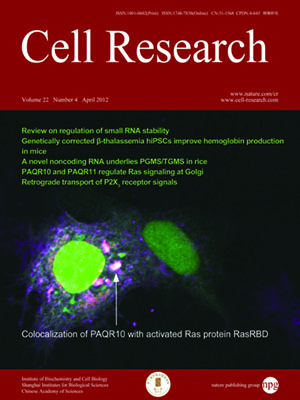
Volume 22, No 4, Apr 2012
ISSN: 1001-0602
EISSN: 1748-7838 2018
impact factor 17.848*
(Clarivate Analytics, 2019)
Volume 22 Issue 4, April 2012: 624-636
REVIEWS
Regulation of small RNA stability: methylation and beyond
Lijuan Ji1 and Xuemei Chen1,2
1Department of Botany and Plant Sciences, Institute of Integrative Genome Biology, University of California, Riverside, CA 92521, USA
2Howard Hughes Medical Institute, Department of Botany and Plant Sciences, Institute of Integrative Genome Biology, University of California, Riverside, CA 92521, USA
Correspondence: Xuemei Chen,(xuemei.chen@ucr.edu)
As central components of RNA silencing, small RNAs play diverse and important roles in many biological processes in eukaryotes. Aberrant reduction or elevation in the levels of small RNAs is associated with many developmental and physiological defects. The in vivo levels of small RNAs are precisely regulated through modulating the rates of their biogenesis and turnover. 2′-O-methylation on the 3′ terminal ribose is a major mechanism that increases the stability of small RNAs. The small RNA methyltransferase HUA ENHANCER1 (HEN1) and its homologs methylate microRNAs and small interfering RNAs (siRNAs) in plants, Piwi-interacting RNAs (piRNAs) in animals, and siRNAs in Drosophila. 3′ nucleotide addition, especially uridylation, and 3′-5′ exonucleolytic degradation are major mechanisms that turnover small RNAs. Other mechanisms impacting small RNA stability include complementary RNAs, cis-elements in small RNA sequences and RNA-binding proteins. Investigations are ongoing to further understand how small RNA stability impacts their accumulation in vivo in order to improve the utilization of RNA silencing in biotechnology and therapeutic applications.
Cell Research (2012) 22:624-636. doi:10.1038/cr.2012.36; published online 13 March 2012
FULL TEXT | PDF
Browse 2248


